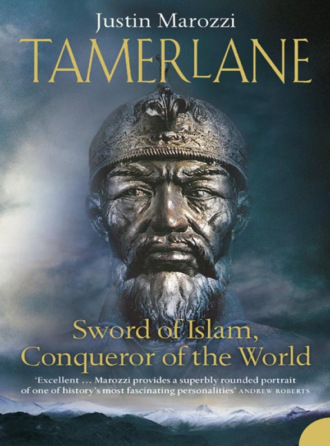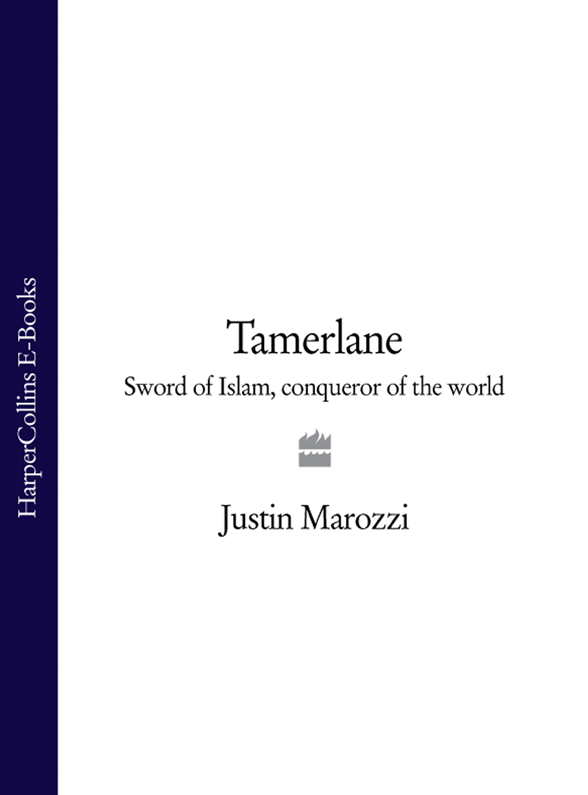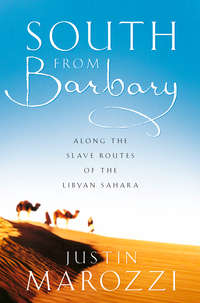
Полная версия
Tamerlane: Sword of Islam, Conqueror of the World


TAMERLANE
Sword of Islam,Conqueror of the World
JUSTIN MAROZZI

Dedication
This book is dedicated to my motherand to the memory of my father
Contents
Cover
Title Page
Dedication
A Note on Spelling and Terminology
1 Beginnings on the Steppe: 1336–1370
2 Marlowe’s ‘Scourge of God’: 1370–1379
3 ‘The Greatest and Mightiest of Kings’
4 Conquest in the West: 1379–1387
5 The Golden Horde and the Prodigal Son: 1387–1395
6 Samarkand, the ‘Pearl of the East’: 1396–1398
7 India: 1398–1399
8 ‘This Pilgrimage of Destruction’: 1399–1401
9 Bayazid the Thunderbolt: 1402
10 The Celestial Empire: 1403–1404
11 ‘How that Proud Tyrant was Broken & Borne to the House of Destruction, where he had his Constant Seat in the Lowest Pit of Hell’: 1404–1405
12 An Empire Dies, Another is Born
Appendix A: Chronology of Temur’s Life
Appendix B: Events in Europe in the Fourteenth Century
Bibliography
Index
Acknowledgements
About the Author
Praise
By the Same Author
Copyright
About the Publisher
A Note on Spelling and Terminology
A couple of years ago, Frances Wood observed in The Silk Road: ‘I think this is the most complicated book I have ever written when it comes to spelling place names.’ I know the feeling. Central Asia is a minefield. And it is not just place names.
The world’s most famous Mongol conqueror is a case in point. Take your pick from Genghis Khan, Chinghiz Khan, Chingiz Khan, or even Chinggis Khan. The lands he bequeathed his son became the Juchid empire. Others call it Jochid. Still others prefer Djöčid.
Scholars invariably favour the more obscure spellings, but I have tried to use terms familiar to the general reader. Central Asian names are complicated enough, it seems to me, without making things more difficult.
Tamerlane was in fact Temur (or Timur). The longer name by which we in the West know him was a corruption of Temur the Lame. He was a Chaghatay (or Čaghatay if you like your diacritic symbols), or a Turkicised Mongol, or a Turk; but I have followed a long line of Europeans who describe him as a Tatar.
Consistency in these matters is as elusive as peace and tranquillity were to Temur. As T.E. Lawrence so emphatically expressed it in Seven Pillars of Wisdom after a plea for clarity from his editor: ‘There are some “scientific systems” of transliteration, helpful to people who know enough Arabic not to need helping, but a wash-out for the world. I spell my names anyhow, to show what rot the systems are.’ In a less brazen way I have followed his example.
Конец ознакомительного фрагмента.
Текст предоставлен ООО «ЛитРес».
Прочитайте эту книгу целиком, купив полную легальную версию на ЛитРес.
Безопасно оплатить книгу можно банковской картой Visa, MasterCard, Maestro, со счета мобильного телефона, с платежного терминала, в салоне МТС или Связной, через PayPal, WebMoney, Яндекс.Деньги, QIWI Кошелек, бонусными картами или другим удобным Вам способом.





